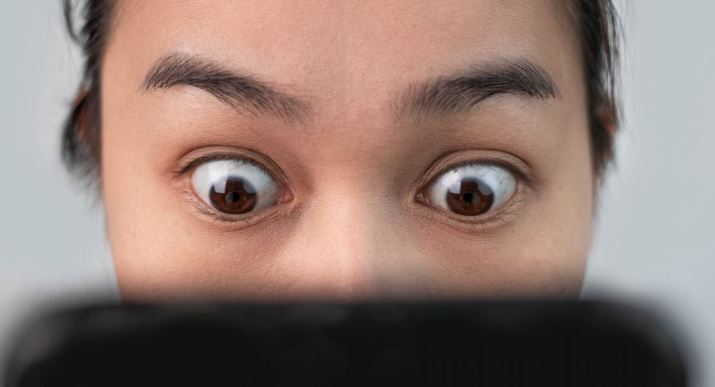What is that one thing that you absolutely cannot live without? For most people, a smartphone would top the list. It’s that one device you reach for when you’re trying to evade boredom at work, in bed, at the bus station, inside the bus – pretty much anywhere, and this easy accessibility is what has made us addicted to smartphones.
Most of us can’t even go for 5 minutes without fumbling into our handbags for our precious device, and thanks to the ever-present technology, we need these smartphones for even smallest things like ordering food, hailing a ride, booking a hotel or staying in touch with loved ones.
But with excessive use of technology, more and more people are disconnecting from reality, and just like with any other drug, smartphone addiction can lead to severe withdrawal symptoms when you try to distance yourself from it. But besides the psychological side effects of being addicted to your smartphone, there is a slew of other horrific health implications of staring at a screen all day.
Eye strain
Almost all of the modern-day technology consists of an LED screen whether it’s your television, computer or smartphone. Even when you’re at work or studying for an all-important test, you’re staring at your computer screen most of the time (because books are so early 2000’s). Now once you throw your smartphone into the mix, all this screen time is bound to take a toll on your eyesight.
Optometrist, Howard Purcell, says that extensive use of digital devices can cause strain on your eyes leading to scary symptoms like itchiness, redness, blurred vision and headaches. Our eyes are not meant to look at the harsh blue light emitted from most digital devices for an extended period of time. Many studies have warned that excessive smartphone use can cause your pupils to become sensitive to light and cause strain in muscles around the eyes.
If you absolutely have to use a digital device for work or other educational purposes, doctors suggest following a 20/20/20 rule where you give your eyes a rest from staring at the screen every 20 minutes and look at something else that is at least 20 feet away for 20 seconds. This will give your eyes a much-needed break and prevent them from getting fatigued.
Neck pain
Notice your posture the next time you watch a cute cat video or text your friend on a smartphone. Most of us get in the habit of hunching over when using digital devices which isn’t only bad for our posture but can also lead to severe neck and shoulder pain. This condition is so common among smartphone users that it has earned its own medical term: text neck.
Wrist Sprains
It’s not just your neck and your eyes that are suffering from your excessive smartphone use. Medical experts caution their patients against this bad habit because of its harmful effects on tendon attachments and wrist strength. Cases of wrist sprains and carpal tunnel are more prevalent than ever because of the widespread use of handheld digital devices.
Impaired sleep
Do you ever find yourself fumbling for your phone in bed to check any notifications, only to find yourself on Instagram or Facebook till 3 in the morning? Well, now you know why you feel tired and irritable at work all day.
A good night’s sleep is very important for proper brain functioning which is it is advisable to put away your digital devices at bedtime and not use them until the morning. Looking at a bright screen before going to sleep will reduce the melatonin levels in your body and trigger the production of stress hormones which will keep your brain alert for hours past your bedtime.
Anxiety
The ever-prevalent issue of anxiety and other mental disorders is complex and multifaceted, but it wouldn’t be far-fetched to say that the cyber world has played some role in the alarming rise of mental health issues around the globe. Psychiatrists say that most people end up being diagnosed with acquired anxiety disorder because they’re spending more time in the digital world than the real world.
